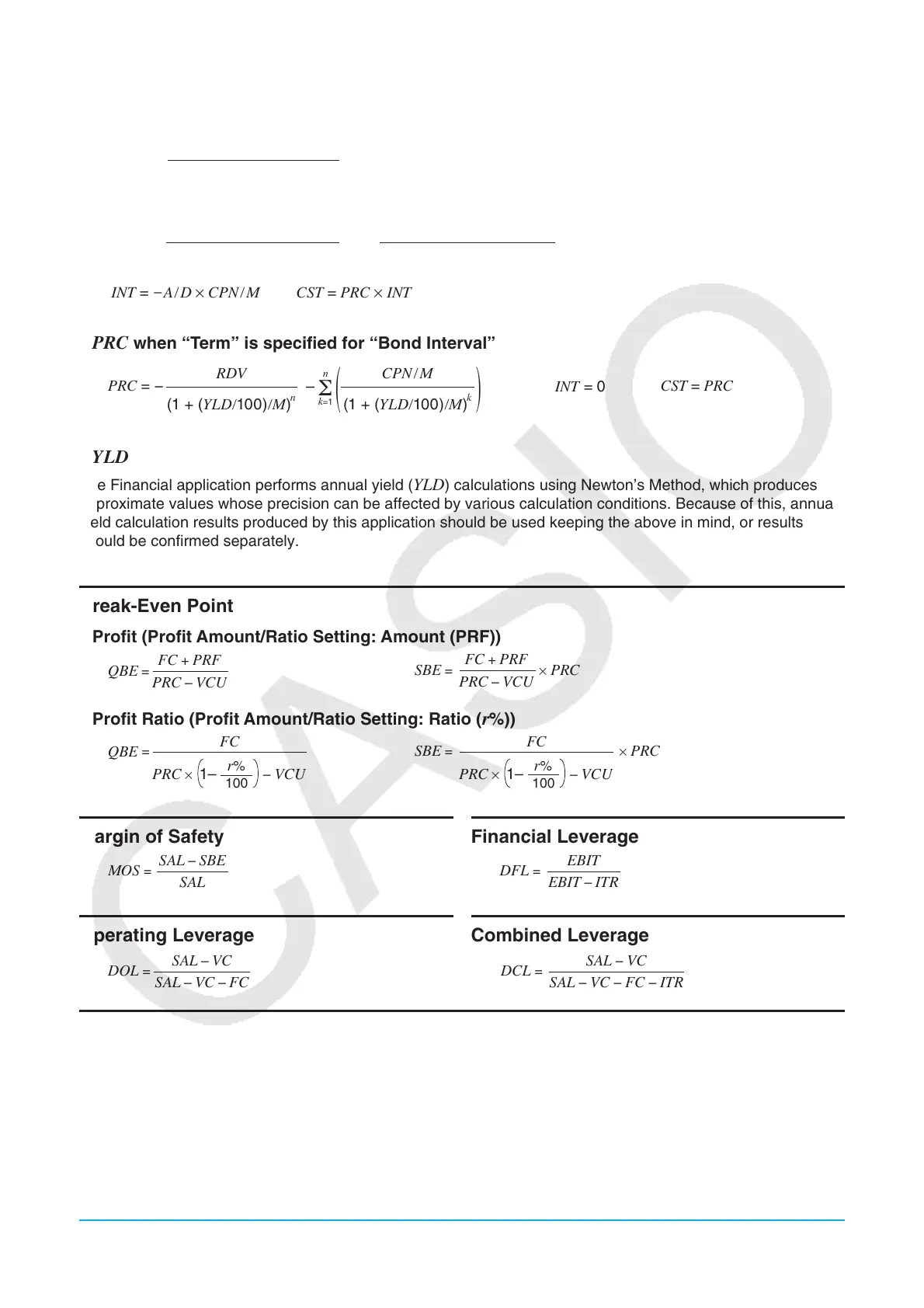Chapter 11: Financial Application 186
u PRC when “Date” is specified for “Bond Interval”
For one or fewer coupon period to redemption:
PRC = − +
RDV + CPN/M
1+(B/D × (YLD/100)/M)
A/D × CPN/
For more than one coupon period to redemption:
INT =
−
A/D × CPN/M CST = PRC × INT
PRC = − –
RDV
Σ
N
k=1
(1 + (YLD/100)/M)
(N–1+B/D )
(1 + (YLD/100)/M)
(k–1+B/D )
+
CPN/M
()
A/D × CPN/
u PRC when “Term” is specified for “Bond Interval”
PRC = −
INT
= 0
CST
= PRC
–
RDV
Σ
n
k
=1
n
k
CPN/M
(1 + (YLD/100)/M) (1 + (YLD/100)/M)
()
u YLD
The Financial application performs annual yield (YLD) calculations using Newton’s Method, which produces
approximate values whose precision can be affected by various calculation conditions. Because of this, annual
yield calculation results produced by this application should be used keeping the above in mind, or results
should be confirmed separately.
Break-Even Point
u Profit (Profit Amount/Ratio Setting: Amount (PRF))
PRC – VCU
FC
+ PRF
QBE
=
PRC – VCU
FC
+ PRF
SBE
= × PRC
u Profit Ratio (Profit Amount/Ratio Setting: Ratio (r%))
PRC ×
–
VCU
QBE
=
FC
100
r%
1–
× PRC
PRC
×
–
VCU
SBE
=
FC
100
r%
1–
Margin of Safety
SAL
OS =
SAL – SBE
Financial Leverage
EBIT – ITR
DFL
=
EBIT
Operating Leverage
SAL – VC – FC
OL =
SAL – VC
Combined Leverage
SAL – VC – FC – ITR
DCL
=
SAL – VC
Quantity Conversion
SAL = PRC × QTY VC = VCU × QTY

